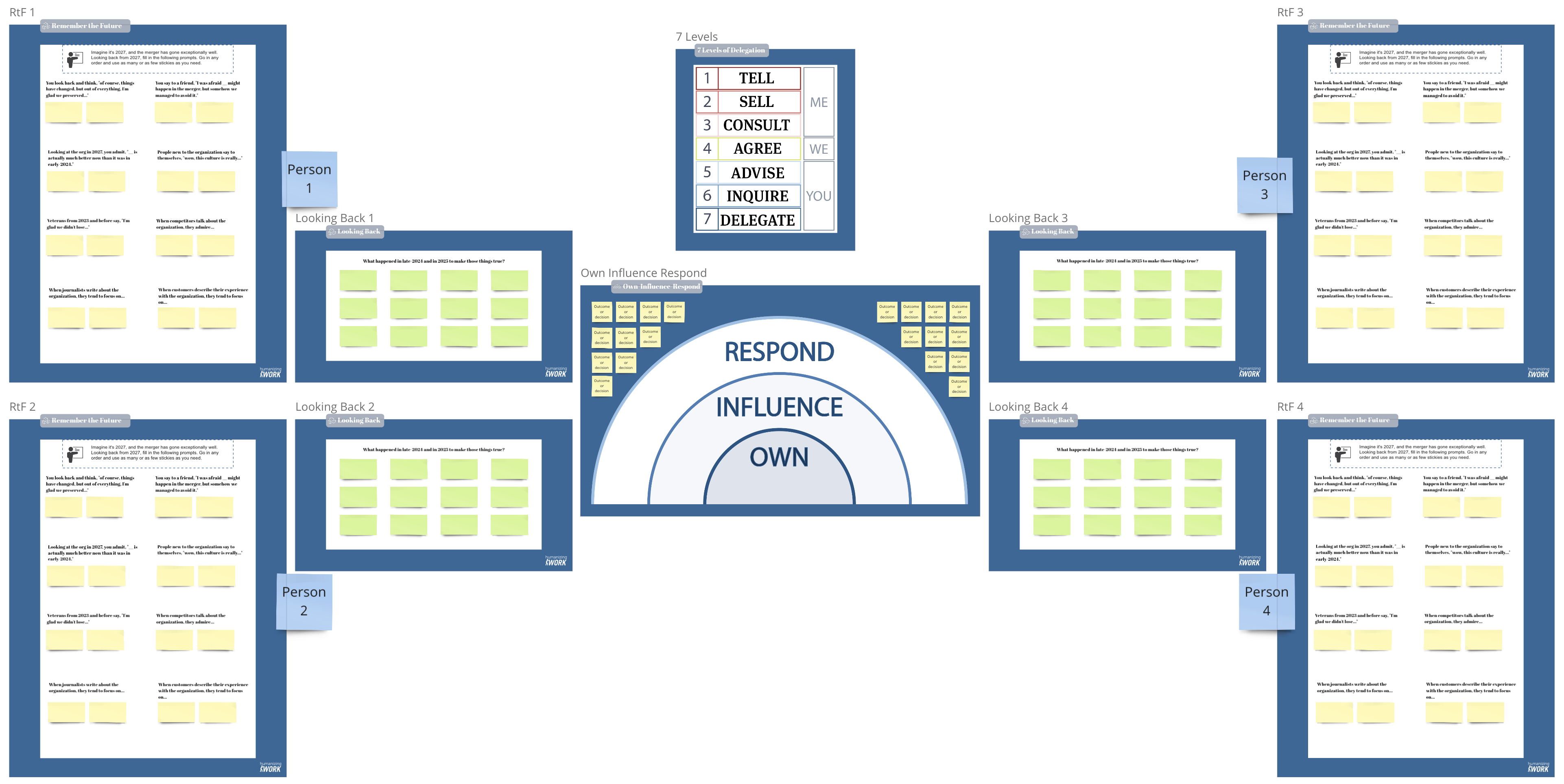Recently, we were asked to facilitate a working session for a leadership team. They were at the beginning of a major organizational change that they didn’t have much control over. They wanted to lead through the change in a way that preserved the best of their past values and culture, and that produced positive outcomes for everybody involved.
But that goal felt too open-ended. What exactly should be preserved from the past? What should be allowed to change? What steps will leaders need to take to create positive outcomes and avoid negative ones?
We were invited in to help them think more clearly about this challenge.
To bring clarity and inspiration to the leadership team, we built our facilitation approach around the Remember the Future idea from Luke Hohmann’s excellent resource, Innovation Games.
In a nutshell, Remember the Future is an activity where you shift your perspective to a concrete point in the future and then reflect on what things are like and how they got that way. Instead of asking, say, “What should our product do?” you ask, “What will our product have done?”
Luke explains,
When we ask “What will our product have done?” we are thinking of a future event as one that already has occurred “remembering” the future. Because this event is “in the past,” we must mentally generate a sequence of events that caused this event to have occurred. We not only have a more concrete idea or what the product did, we can begin to answer the question “How did the product do it?” Others will tend to judge our answers as more richly detailed, more sensible, and more plausible, precisely because an outcome or future is thought of as already accomplished. It can be more easily described.
Innovation Games applied Remember the Future to figuring out what a product should do, but we’ve found that the general approach works just as well for vision and strategic planning.
In this case, we asked the members of the leadership team to shift their minds to a particular future date after which this major change had already happened successfully. Then, we invited them to individually brainstorm on sticky notes on a Miro board on several questions like:
- You look back and think, “of course, things have changed, but out of everything, I’m glad we preserved…”
- You say to a friend, “I was afraid __ might happen, but somehow we managed to avoid it.”
- Looking at the org in 2027, you admit, “__ is actually much better now than it was in early-2024.”
- People new to the organization say to themselves, “wow, this culture is really…”
- Veterans from 2023 and before say, “I’m glad we didn’t lose…”
- When competitors talk about the organization, they admire…
- When journalists write about the organization, they tend to focus on…
- When customers describe their experience with the organization, they tend to focus on…

After several minutes of brainstorming, we invited participants to look at others’ sticky notes and then asked people to share specific examples from other people that resonated with them. This created a sense of energy and alignment in the group. (One participant commented, “I love this game!”)
Next, we went back to individual brainstorming. We asked participants to brainstorm, “What happened in late-2024 and in 2025 to make those things true?” They had to tell a bit of the story of how the future they were remembering came to be.
This shift in perspective is remarkable. “What are all the things we need to do in late-2024 and 2025?” is a hard question. Looking back and asking, “What will we have done?” is so much easier.
Finally, we facilitated a conversation about actions the leadership team could take to make the positive outcomes more likely to happen. In some cases, those actions were things the team fully owned. In some cases, those actions were about influencing someone else. And in other cases, those actions were simply about responding well to things happening outside their control or even influence.
Are you taking on a big initiative or a big organizational change? Consider Remember the Future as a thinking tool to get clear on where to go and how to get there.
And if your leadership team is facing high-stakes strategic planning, consider bringing in a skilled facilitator to help you create more clarity and alignment. Contact us for more information.
Last updated